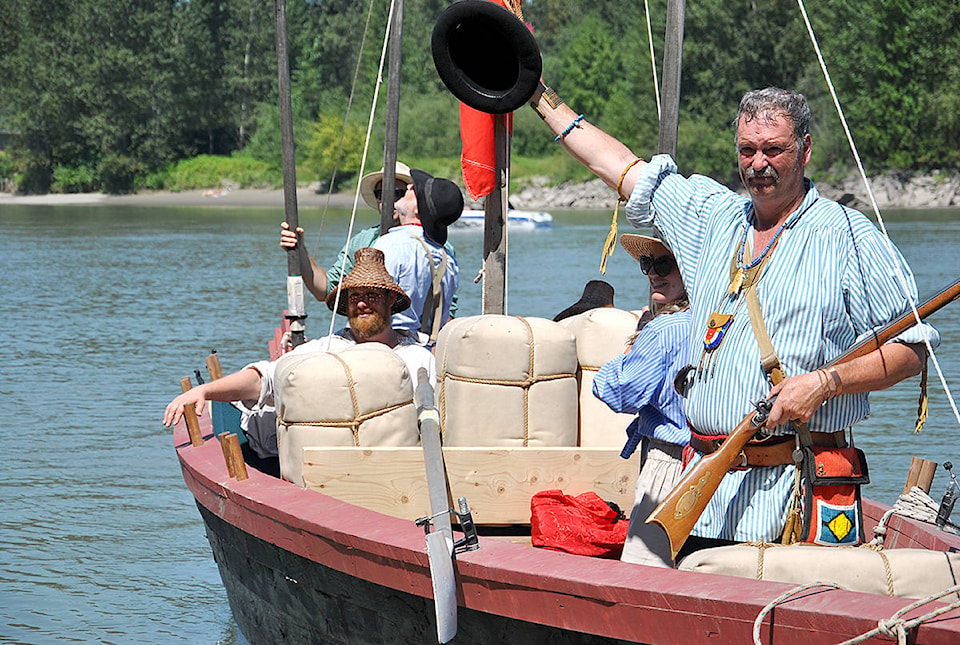A few hundred spectators gathered along the banks of the Bedford Channel in Fort Langley Monday to witness the historically accurate arrival of the fur brigades.
The annual mock event seems a fitting way to celebrate B.C. Day, explained long-time Fort Langley National Historic Site interpreter Aman Johal.
Each year, the fort hosts a three-day Brigade Days celebration. The festivities include a procession of fort staff and volunteers – adorned period costumes – parading down from the fort to the shores of the nearby river – where they meet a number of arriving canoes and boats.
It’s a re-creation of the arrival of the fur brigades in the early 1800s, when the fort at Fort Langley was in its heyday and was an active Hudson’s Bay Company trading post.
“We were a supply depot,” Johal explained to the crowd watching the ceremonial arrival.
• CLICK HERE TO SEE MORE PHOTOS
Several members and canoes from the Fort Langley Canoe Club accompanied a team of “dignitaries” in the Bedford Rowing Society’s replica York boat called Brenda A, came ashore after a drumming welcome from members of the Kwantlen First Nation.
Hudson’s Bay constructed the first fort about four kilometres downstream from the current fort site in 1827. By 1830, it was a major export port for sale salmon in barrels, as well as cedar lumber, and shingles bound for Hawaii. And, of course, beaver pelts.
“All the other forts in the Interior would pack up their furs for the Hudson’s Bay Company and bring them down here with the voyageurs. Voyageurs” who Johal equated to “primitive UPS men” bringing all their furs to the coast.
At Fort Langley, the furs were repackage into larger bundles, and when staff got word a ship from England had docked in Fort Victoria, on Vancouver Island, they would load up the furs on a steamboat and send them off.
“The steamboat would then take four days from here to get to Victoria. In Victoria, you load up that giant sailing ship. That sailing ship goes around South America to England. At top speed, six months.”
Why all this effort?
John offered the answer. “Fashion, that’s all it was… All so gentlemen in England can wear one of these,” Johal said, tipping his top hat.
Explaining that it took one full-grown beaver pelt to produce a top hat, he said the furs were in high demand.
“The value of a hat back then varied like a watch today,” he said. “You can buy a Rollex or get one in your happy meal. Same thing with top hats.”
After regaling the spectators with some of this history, he again tipped his sweat-soaked beaver hat, and welcomed the fur traders ashore.
“So this is what we’re celebrating today,” he said.
